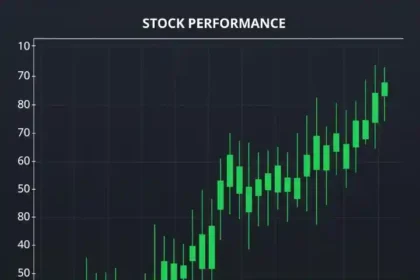For investors, CFOs, and anyone running forecasts, understanding Dow Jones volatility isn’t just cocktail conversation, it’s essential for steady hands in stormy markets.
Deconstructing Dow Jones Volatility
If you’ve watched the Dow lately, you know the headlines: triple-digit swings are back. In early August, the Dow rallied nearly 600 points in a single session, erasing losses from a previous Friday selloff triggered by a disappointing jobs report and fears about escalating tariffs. Just days before, the CBOE Volatility Index (VIX), Wall Street’s so-called “fear gauge” spiked 22% in one day, its sharpest move in over a month.
What’s fueling the swings?
-
Tariffs & trade: Recent months saw new US tariffs hit dozens of countries, fueling uncertainty on supply chains and profits. Market fears jump with every White House pronouncement, and retaliatory moves abroad keep volatility simmering.
-
Interest rates: The Federal Reserve’s stance has been whipsawed by economic data. A weak July jobs report flipped market odds for a September rate cut from 40% to over 80% in just a day. When policy is in flux, so are the markets.
-
Geo-politics & policy: US–China tensions, currency fluctuations, and global headlines all keep traders skittish. August, historically, sees the VIX jump by an average 8.4% since 1990.
-
Seasonality: August is notorious for higher volatility; traders, portfolio managers, and algorithms alike bake that into forecasts.
Impact and Implications for Markets and Businesses
This isn’t just a daily quote screen story. For corporate finance, real world effects matter:
-
Corporate earnings: The largest companies in the Dow have seen mixed results. While 80% of S&P 500 firms have topped expectations, pockets of weakness (notably in tech) spark rapid sector rotations and sudden selloffs.
-
Operational risk: Supply chain managers report jitters as tariffs bite into margins and planning, causing some to delay capital spending and hiring.
-
Investor sentiment: Flows flip between risk-on (buying equities) and risk-off (seeking bonds and gold) with each data print or policy speech. Volatility isn’t just noise; it moves money.
-
Financial planning: Increased volatility has led many organizations to build steeper risk premiums into their financing and budgeting. Uncertainty about policy means more scenario planning, not less.
Navigating Market Swings: Strategies for Business Leaders
To keep your footing through the choppiest waters, here’s what the pros are doing:
-
Embed scenario planning: Agile finance functions are regularly running multi-scenario stress tests on cash flows and capital needs, especially when tariffs or rate shocks are in play.
-
Diversify exposures: Savvy investors are spreading risk across asset classes (equities, bonds, commodities) and geographies to soften single shocks.
-
Stay macro aware: It sounds simple, but keeping an eye on Fed policy, jobs data, trade news, and corporate guidance is vital for front-foot positioning.
-
Active communication: Proactive investor relations and internal comms help manage panic and rumors—clarity supports calmer decisions.
Pitfalls and Best Practices in Responding to Dow Jones Volatility
Common mistakes to avoid:
-
Overreacting to every swing: Making knee-jerk decisions after a big up or down day leads to whipsaw losses and “paralysis by analysis.” Stay close to strategy.
-
Seasonal blindness: Ignoring patterns like August volatility can cause misfills and missed opportunities. Historically, patience in August has rewarded longer-view investors.
-
Misreading macrodata: Not all economic shocks are created equal. Be careful inferring long-term trends from one jobs report, or a single policy headline.
-
Missing the opportunity: Volatility, while scary, breeds opportunity for rebalancing, strategic entry, or hedging, don’t sit on the sidelines out of fear alone.
Best practices:
-
Use both technicals (support/resistance levels, moving averages) and big picture macro signals in tandem.
-
Train teams to communicate about risk factually, not emotionally.
-
Run periodic risk audits focused on “unknowns” rather than historical norms.
Conclusion: Resilience in the Age of Dow Jones Volatility
In times marked by trade wars, policy U-turns, and data surprises, Dow Jones volatility makes old playbooks obsolete. These market swings aren’t setbacks. They’re reminders that resilience and proactive planning define winners in turbulent cycles.
How is your organization preparing for market swings?
Share your lessons in the comments, or connect with a financial advisor to craft a volatility management plan that’s built to last.





